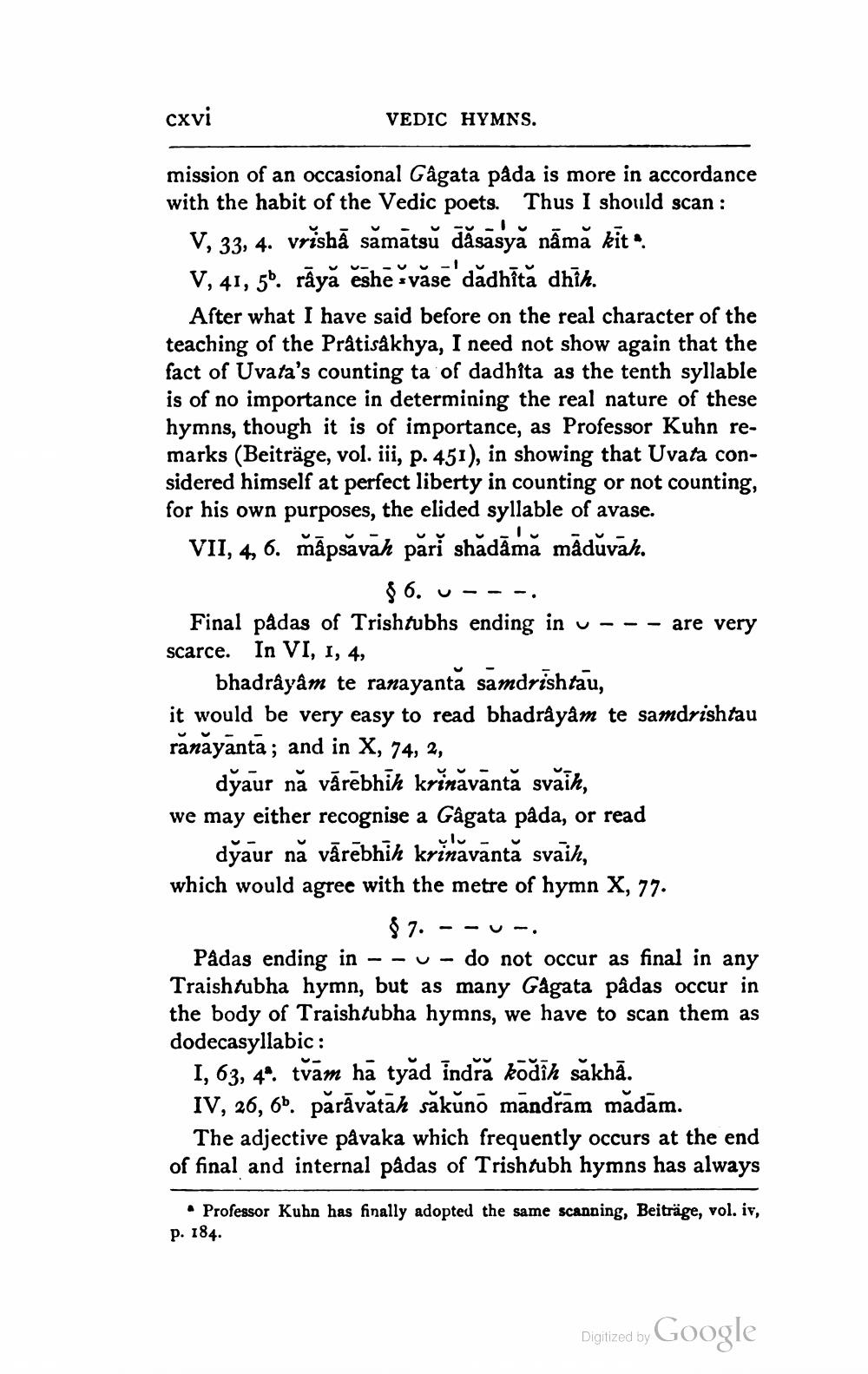________________
cxvi
VEDIC HYMNS.
mission of an occasional Gâgata pada is more in accordance with the habit of the Vedic poets. Thus I should scan:
V, 33, 4. vrishā sămātsù đăsasyă nāmā kit.. V, 41, 56. rāyā eshe svase dădhītă dhih.
After what I have said before on the real character of the teaching of the Prátisakhya, I need not show again that the fact of Uvata's counting ta of dadhita as the tenth syllable is of no importance in determining the real nature of these hymns, though it is of importance, as Professor Kuhn remarks (Beiträge, vol. iii, p. 451), in showing that Uvata considered himself at perfect liberty in counting or not counting, for his own purposes, the elided syllable of avase. VII, 4, 6. māpsávah pări shădāmā mādúvah.
$ 6. U-- Final padas of Trishtubhs ending in --- are very scarce. In VI, 1, 4,
bhadrâyâm te ranayantă samdrishtau, it would be very easy to read bhadrâyâm te samdrishtau ranayantā; and in X, 74, 2,
dyaur nă vârebhih krinăvantă svaih, we may either recognise a Gågata pâda, or read
dyaur na vārebhih krinavantă svaih, which would agree with the metre of hymn X, 77.
$ 7. - -u-. Pådas ending in - -u- do not occur as final in any Traishtubha hymn, but as many Gågata pâdas occur in the body of Traishtubha hymns, we have to scan them as dodecasyllabic:
I, 63, 4. tvām hā tyad indrā ködih sakhā. IV, 26, 66. părāvatah sakūno māndřām mādām.
The adjective påvaka which frequently occurs at the end of final and internal pâdas of Trishtubh hymns has always
• Professor Kuhn has finally adopted the same scanning, Beiträge, vol. iv, p. 184.
Digitized by Google




